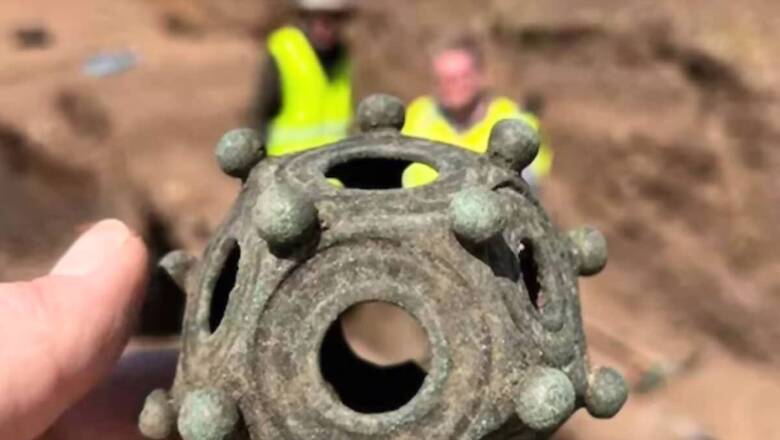
views
Archaeologists have long been uncovering the keys to unravelling mysteries of the past, some of which have significantly influenced the trajectory of human civilization. Yet, amidst the plethora of discoveries, certain artefacts unearthed through excavation or digging continue to elicit more questions than answers, presenting a formidable challenge to scientists.
In the Midlands of England, the Norton Disney History and Archaeology Group recently made a significant discovery: a dodecahedron with 12 holes meticulously crafted into its surface. Each aperture protrudes from a spherical base, marking it as a Roman artefact with an age spanning centuries.
The first known Roman dodecahedron was unearthed nearly 300 years ago in the English countryside. Described as “A piece of mixed metal, or ancient brass, consisting of 12 equal sides,” it was presented to the Society of Antiquaries in London in 1739. Characterized by 12 faces, each containing an equal number of perforations, these objects feature identical diameters, positioned opposite each other.
Physicist Amelia Sparavigna from Italy’s Politecnico di Torino suggests that the Roman military may have utilised the dodecahedrons for range-finding purposes. Sparavigna posits that by peering through the various holes, one could calculate the distance to an object, such as a military or artillery weapon, with only one set of holes aligning for a specific distance.
In 1987, Brian Campbell stumbled upon a similar artefact in his Romford, East London yard while gardening. Striking it with his shovel, he uncovered a lightweight object smaller than a tennis ball. Campbell initially believed it to be a meticulously crafted measuring tool, possibly forged by a blacksmith. It resided on his kitchen windowsill for a decade until a visit to a Roman fort and archaeological park in Saalburg, Germany, provided a revelation: the object bore a striking resemblance to a Roman dodecahedron. This 12-sided metal enigma has confounded archaeologists worldwide.
Numerous similar objects have been discovered across northern Europe, varying in size from golf balls to baseballs, further deepening the mystery surrounding their purpose and significance in ancient Roman society.


















Comments
0 comment